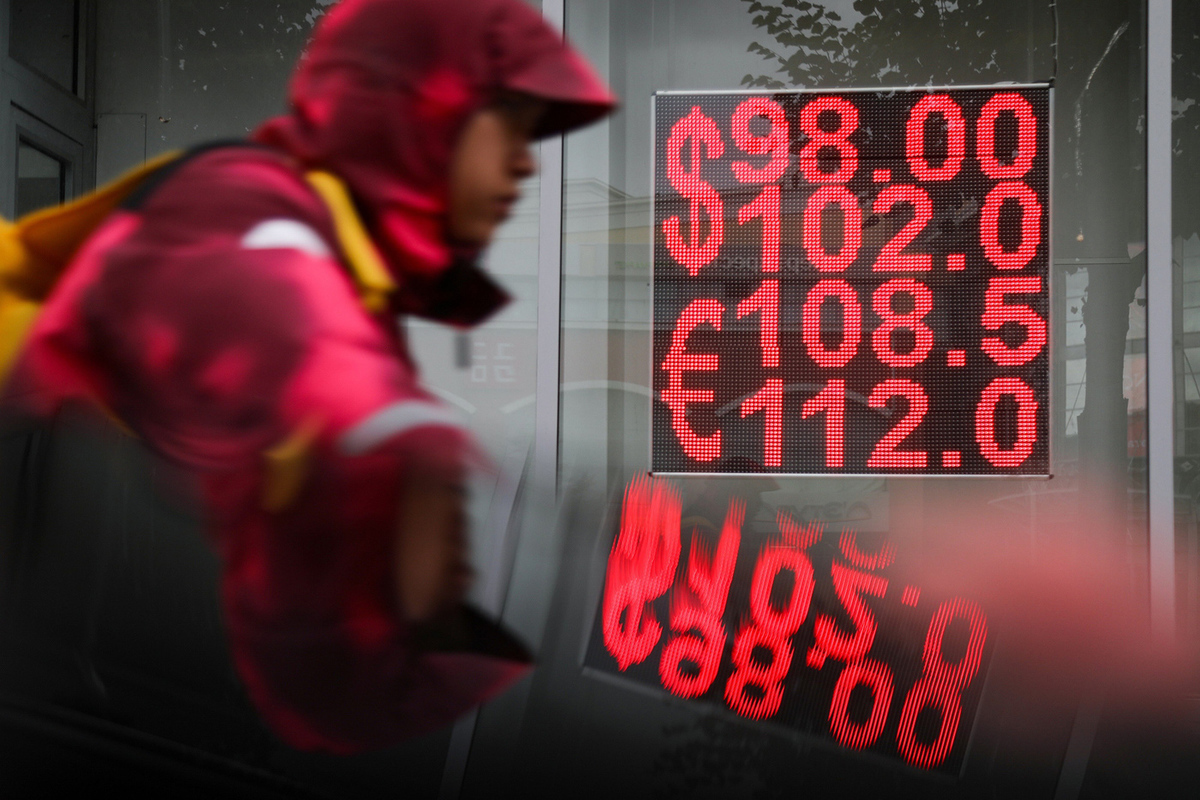Measures to support the ruble have caused a quarrel between the Central Bank and the Ministry of Finance: “external shocks” are getting in the way
[ad_1]

Financial departments have different views on the strengthening of the national currency
The Ministry of Finance and the Central Bank increasingly disagree on the most important issue for the economy: how to stabilize the ruble exchange rate? Siluanov’s department proposed to withdraw from exporters the so-called “exchange rate rent” – a new duty, the amount of which would be tied to the dollar. However, the day before, the Bank of Russia, represented by its first deputy chairman Alexei Zabotkin, said: “In general, we do not support strengthening restrictions on the movement of capital.” Against the backdrop of these disagreements between the two key regulators, the Russian currency is clearly in no hurry to strengthen, frozen around the level of 96 per dollar.
The latest initiative of the Ministry of Finance is partly due to the fact that it lacks 500-700 billion rubles to balance the budget. The agency proposes to introduce a norm for the fourth quarter of 2023, according to which from 4% to 7% of the customs value will be withdrawn from exporters. If the government gives the go-ahead, almost any export directly dependent on the ruble exchange rate will be subject to a duty of 5.5-7% at an exchange rate above 95 rubles per dollar and 3.5-4% at an exchange rate of 80. With a stronger exchange rate, the duty will be zero.
Apparently, the idea arose spontaneously – “following” a recent meeting with the president, where he instructed members of the government to take additional measures to strengthen the ruble. The measure proposed by the financial department can be viewed in different ways, but there is a high probability that it will not be implemented – due to the obvious and even officially recognized lack of consensus between the Central Bank and the Ministry of Finance.
“Previously, the Central Bank was a very strict follower of upholding the topic of currency control,” Finance Minister Anton Siluanov recalled in early September. – The Ministry of Finance was more liberal. Now it has changed: we are for more stringent measures regarding flow control, since the situation is known. The Central Bank, on the contrary, has taken a liberal position here.”
In turn, Elvira Nabiullina noted that neither the mandatory sale of foreign currency earnings of exporters nor the repatriation of earnings to Russia will give the effect that is expected from these steps being discussed today. “This does not change the balance of supply and demand for currency,” said the head of the regulator, essentially throwing a pebble into the Ministry of Finance’s garden. Well, the Central Bank continues to stand its ground, believing that the exchange rate should be influenced exclusively through monetary policy instruments (MCP), using the key rate and currency sales on the market.
“There is nothing criminal in the disagreements between the two government agencies on issues of currency control,” says Alexander Shneiderman, head of the sales and customer support department at Alfa-Forex. – This is not a deviation from the norm: both bodies have different tools and goals. The Central Bank seeks to ensure the stability of the ruble and inflation, acting within its usual framework of monetary policy, while the Ministry of Finance is focused on fiscal policy and capital control measures. An absentee dispute between them should be perceived not as a confrontation, but as a search for a compromise. It is important that the interests of the economy and citizens are taken into account in this process.”
It is extremely difficult to understand the intricacies of such different positions, but one thing is clear: until recently, neither the Central Bank nor the Ministry of Finance sought to support the ruble, says financial analyst Sergei Drozdov. This created a dangerous situation for the exchange rate, when at any moment it could fall well below 100 per dollar – in the event of another geopolitical force majeure. The bad thing is that the ruble has been staying near 96 for a long time, since the market is getting used to this value. For many experts, the ultimate dream was the 90 mark. And yet, Drozdov sums up, the financial authorities will certainly take some measures: a direct order from above will be difficult to ignore. “Usually there is a consensus between the Central Bank and the Ministry of Finance on the main issues of monetary policy, but today is a completely special situation. For now, we can only watch the developments,” the analyst adds.
“External shocks make it difficult to find compromise solutions,” says Alexey Vedev, director of the Center for Structural Research at RANEPA. – The parties have outlined their positions quite a long time ago. The monetary policy acts indirectly and rather slowly, while the measures proposed by the Ministry of Finance have a faster effect. At the same time, today both departments are aware of the danger of excessive devaluation of the ruble, although back in the spring the Central Bank completely disowned this topic. Personally, I prefer the approach of the Ministry of Finance: what is needed today is efficiency, which will prevent the economy from slowing down in the fourth quarter. In general, we are talking not so much about disagreements between the two departments, but about choosing the most adequate tools in the current conditions, as well as attempts to thoroughly calculate everything in order to avoid mistakes and negative consequences.”
[ad_2]
Source link






